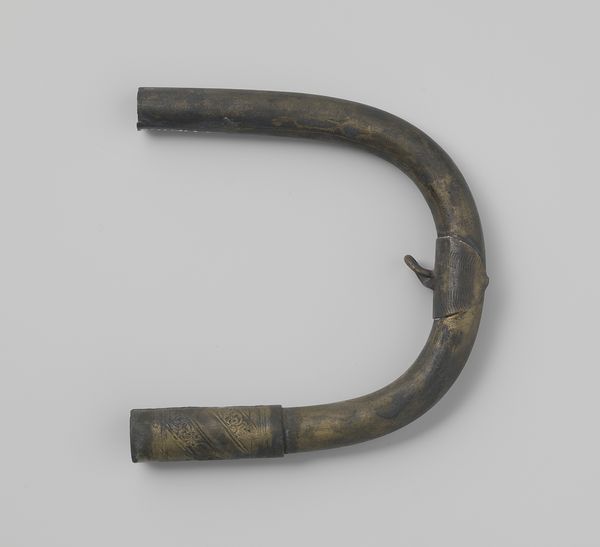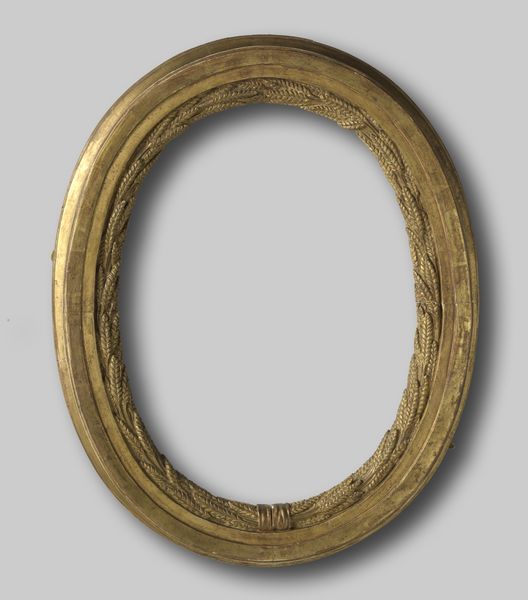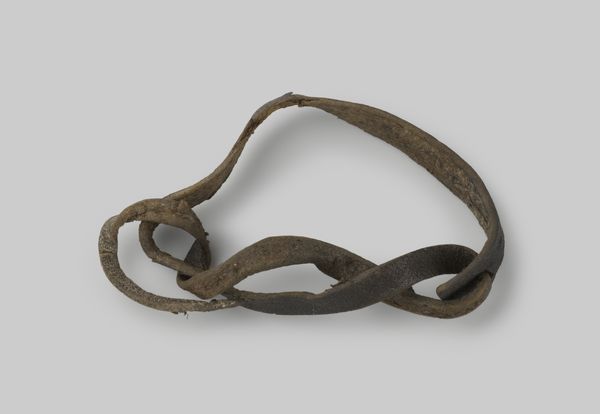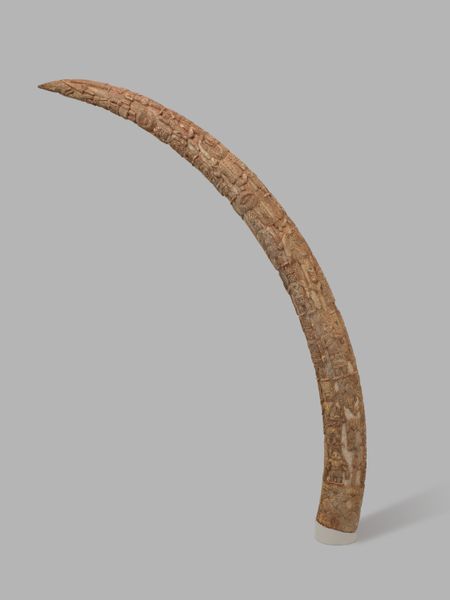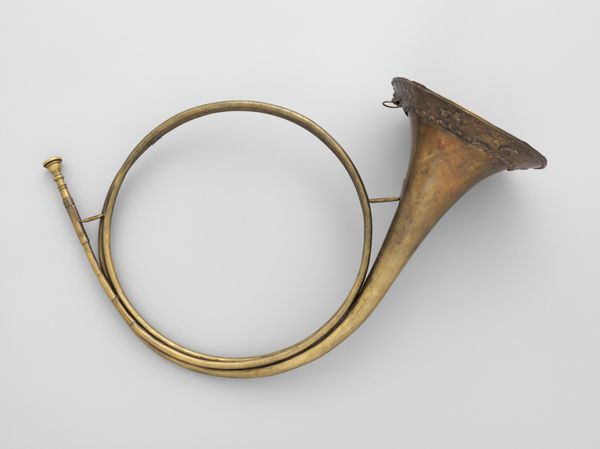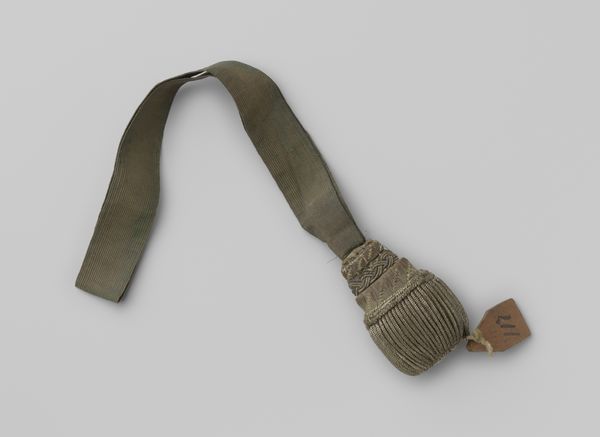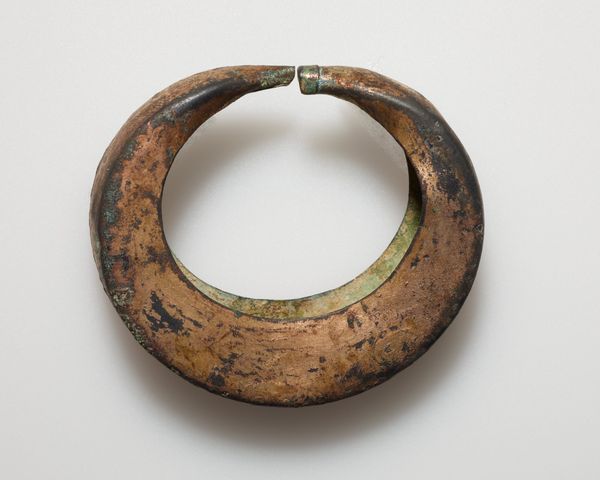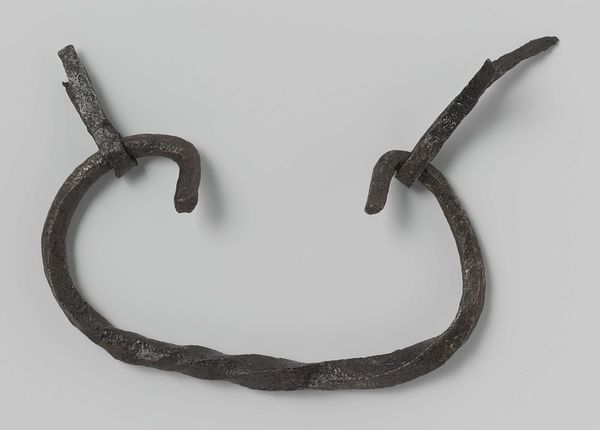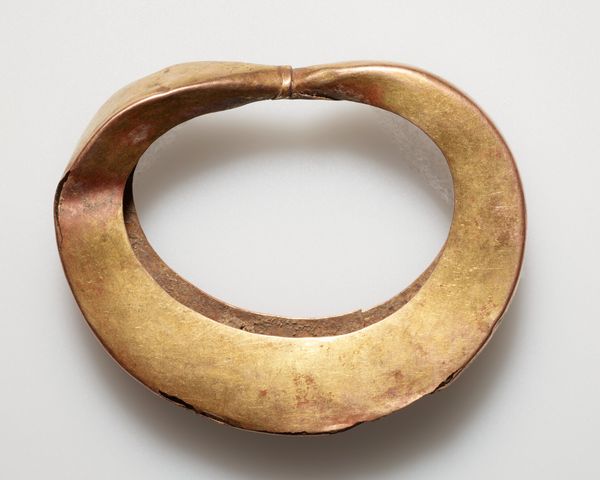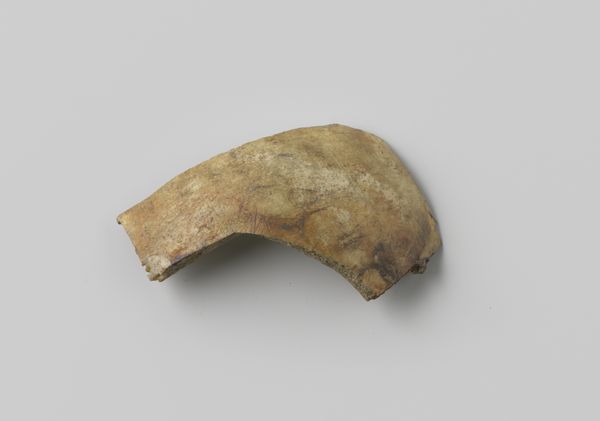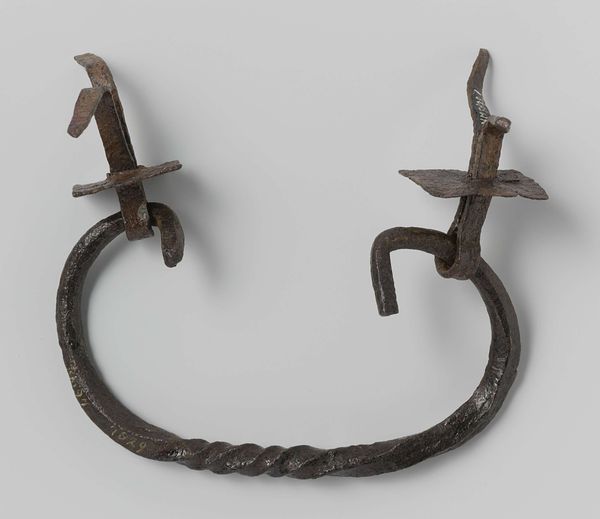
sculpture, wood
#
organic
#
baroque
#
geometric
#
sculpture
#
wood
Dimensions: height 10.5 cm, width 47 cm, depth 39 cm
Copyright: Rijks Museum: Open Domain
Curator: This fragment is what remains of a natural horn, crafted in 1732 by Johann Heinrich Eichentopf. Editor: My first thought is a snake shedding its skin, but bronzed. It has an unexpectedly brutal geometry, considering its organic inspiration. Curator: Yes, there’s a tension, isn't there? It’s a piece of wood simulating, mimicking something utterly different. Think of the skill involved in manipulating the material to conjure the idea of a sound. The craft labor here is astounding. Editor: Absolutely. I’m captivated by how this object negotiates the terrain between artifice and authenticity, the hand of the craftsman shaping and forming nature's material to replicate a naturally grown animal feature. It poses questions of artistic identity, class hierarchies around labour and the materials to use. Curator: Perhaps this tension highlights the desire to not only emulate the natural world but to enshrine and elevate it. What do we choose to make precious? What parts of nature are celebrated by humankind and what parts are excluded or left untouched? Editor: The dark undertones are something I also observe: what instruments are playing, and where, while they’re accompanied by a ‘natural horn?’ Whose labour produces not only the sculpture, but the instrument that this sculpture represents? We often disregard the labor-capital relations inherent within artworks. Curator: The piece is now only a fragment. What narrative and melody does this "silence" of an absent instrument convey? It holds an air of loss, of untold songs or signals never sounded, that are now permanently muted, adding a further dimension of both irony and melancholy to Eichentopf's creation. Editor: Thinking materially has definitely shifted my perspective: considering labour and processes makes it both powerful and sorrowful. It represents not only an object of status, but one born out of intense exploitation to produce that status symbol. Curator: The more we talk, the more I feel the horn calls out across centuries, prompting not only observation, but interrogation, beckoning us to unravel the threads of its complex existence.
Comments
No comments
Be the first to comment and join the conversation on the ultimate creative platform.
